Operation of Power-to-X-Related Processes Based on Advanced Data-Driven Methods: A Comprehensive Review
Abstract
:1. Introduction
2. Related Studies
3. P2X Processes
3.1. Basics
3.2. Operation
4. Data-Driven Operation of P2X Plants
4.1. P2X Plant as an Industrial Cyber–Physical System
- Physical layer: This domain includes P2X plants that are used to physically perform the energy conversion. It also contains the measuring devices or sensors used to gather the information on analog variables. In the plant process, variables from renewable energy sources, CO2, and are examples.
- Data layer: This domain is where the analog of digital information is processed and converted into useful information about the plant’s variables. It contains relevant input information such as CO2 capture, the spot price of electricity, synthesis load, storage, etc., that can later be injected into machine learning algorithms.
- Decision layer: This domain is where the decision outcomes from the useful information from the data layer are involved. The decision can be performed either automatically by machines or by humans. In the process, these decisions can include the on/off scheduling of the plant based on predicted spot prices and the current state of the electrolyzer for energy storage.
4.2. Optimization Methods
4.3. Internet of Things
4.4. Artificial Intelligence
4.5. Metaheuristics
4.6. Machine Learning
4.7. Working of IoT and Big Data
5. Example: Theoretical Architecture for Deep Learning-Based Activation of Electrolyzers
5.1. Data Acquisition and Communication Network Architecture
- Initial phase: The data acquisition stage is where big data generated during the previous phase is stored considering the specification of the end application. The master node of the Hadoop cluster is then sent the acquired data. Data need to be prepared due to the variety of data formats from the heterogeneous devices. In data preparation, accurate and incomplete data are handled, and incomplete data are either fixed or removed. Data collection is executed via Flume, which compiles, combines, and sends massive amounts of data to the Hadoop master node. Flume keeps track of the data it receives in one or more channels.
- Second phase: Following that, the data are sent to an outside Hadoop Distributed File System (HDFS) repository. Data are then serialized and written in the required format by storing individual blocks of large files on numerous data nodes connected to the master node. HDFS is capable of storing any type of data: structured, unstructured, or semi-structured. To conform to the desired format, the serializers rearrange and modify the Flume data, which are kept in various HDFS clusters for processing. The HDFS clusters are made up of DataNodes. The actual data and file system metadata are jointly stored in these DataNodes. The two run on the same set of nodes, allowing jobs to be handled on nodes where the data are present. YARN is used to analyze data stored in HDFS.
- Third phase: SQL queries are executed during this phase, which can be executed on HDFS data using the tools Hive and Impala. Specifically, HIVE is utilized for data querying, data selection, analysis, and computation on the pertinent data.
- Last phase: The last step is data analytics and involves sharing the processed data to be used as a decision-support tool. Scalable Advanced Massive Online Analysis (SAMOA) is employed as a distributed streaming machine learning framework to perform data analytics in Hadoop.
5.2. Data Processing Using Machine Learning
- Five hidden layers activated by ReLU function;
- One output layer activated by linear function;
- Adam optimizer and mean squared error loss function;
- Twenty epochs with batch size of 1000;
- Dataset split into 90% for training and 10% for testing.
6. Conclusions
Author Contributions
Funding
Institutional Review Board Statement
Informed Consent Statement
Data Availability Statement
Acknowledgments
Conflicts of Interest
Abbreviations
| P2X | power-to-X |
| P2G | power-to-gas |
| IoT | Internet of Things |
| ML | machine learning |
| SNG | synthetic natural gas |
| hydrogen | |
| methane | |
| SAMOA | scalable advanced massive online analysis |
| HDFS | Hadoop Distributed File System |
| SQL | sequential query language |
| QoS | quality of service |
| AI | artificial intelligence |
| CPS | cyber–physical system |
| CO2 | carbon dioxide |
| LP | linear programming |
| MILP | mixed integer linear programming |
| GIS | graphical information system |
| DSO | distribution system operator |
References
- Nardelli, P.H. Cyber-Physical Systems: Theory, Methodology, and Applications; John Wiley & Sons: Hoboken, NJ, USA, 2022. [Google Scholar]
- Costantini, V.; Morando, V.; Olk, C.; Tausch, L. Fuelling the Fire: Rethinking European Policy in Times of Energy and Climate Crises. Energies 2022, 15, 7781. [Google Scholar] [CrossRef]
- Pirani, S. Burning Up: A Global History of Fossil Fuel Consumption; Pluto Press: London, UK, 2018. [Google Scholar]
- Child, M.; Kemfert, C.; Bogdanov, D.; Breyer, C. Flexible electricity generation, grid exchange and storage for the transition to a 100% renewable energy system in Europe. Renew. Energy 2019, 139, 80–101. [Google Scholar] [CrossRef]
- Ozturk, M.; Dincer, I. A comprehensive review on power-to-gas with hydrogen options for cleaner applications. Int. J. Hydrogen Energy 2021, 46, 31511–31522. [Google Scholar] [CrossRef]
- Inkeri, E.; Tynjälä, T.; Karjunen, H. Significance of methanation reactor dynamics on the annual efficiency of power-to-gas-system. Renew. Energy 2021, 163, 1113–1126. [Google Scholar] [CrossRef]
- Ullah, M.; Nardelli, P.H.; Wolff, A.; Smolander, K. Twenty-one key factors to choose an iot platform: Theoretical framework and its applications. IEEE Internet Things J. 2020, 7, 10111–10119. [Google Scholar] [CrossRef]
- Ullah, M.; Narayanan, A.; Wolff, A.; Nardelli, P. Smart Grid Information Processes Using IoT and Big Data with Cloud and Edge Computing. In Proceedings of the 2021 44th International Convention on Information, Communication and Electronic Technology (MIPRO), Opatija, Croatia, 27 September–1 October 2021; pp. 956–961. [Google Scholar]
- Jung, A. Machine Learning: The Basics; Springer Nature: Berlin, Germany, 2022. [Google Scholar]
- Kanade, V. What Is Machine Learning? Understanding Types & Applications. Available online: https://www.spiceworks.com/tech/artificial-intelligence/articles/what-is-ml/ (accessed on 26 October 2022).
- Giehl, J.; Sudhaus, T.; Kurre, A.; Mikulicz-Radecki, F.v.; Hollnagel, J.; Wacker, M.; Himmel, J.; Müller-Kichenbauer, J. Modelling the impact of the energy transition on gas distribution networks in Germany. Energy Strategy Rev. 2021, 38, 100751. [Google Scholar] [CrossRef]
- Schiebahn, S.; Grube, T.; Robinius, M.; Tietze, V.; Kumar, B.; Stolten, D. Power to gas: Technological overview, systems analysis and economic assessment for a case study in Germany. Int. J. Hydrogen Energy 2015, 40, 4285–4294. [Google Scholar] [CrossRef]
- Klatzer, T.; Bachhiesl, U.; Wogrin, S. State-of-the-art expansion planning of integrated power, natural gas, and hydrogen systems. Int. J. Hydrogen Energy 2022, 47, 20585–20603. [Google Scholar] [CrossRef]
- Quarton, C.J.; Samsatli, S. Should we inject hydrogen into gas grids? Practicalities and whole-system value chain optimisation. Appl. Energy 2020, 275, 115172. [Google Scholar] [CrossRef]
- Farrokhifar, M.; Nie, Y.; Pozo, D. Energy systems planning: A survey on models for integrated power and natural gas networks coordination. Appl. Energy 2020, 262, 114567. [Google Scholar] [CrossRef]
- Haumaier, J.; Hauser, P.; Hobbie, H.; Möst, D. Grünes Gas für die Gaswirtschaft–Regionale Power-to-Gas-Potentiale aus Onshore-Windenergie in Deutschland. Z. Energiewirtsch. 2020, 44, 61–83. [Google Scholar]
- Pick, J.B.; Perry, M.; Rosales, J. Application of GIS to Support Regional Policy for Development of Renewable Energy in Southern California: An Exploratory Case Study Analysis. 2014 Proceedings. 2014, 1. Available online: https://aisel.aisnet.org/siggis2014/?utm_source=aisel.aisnet.org%2Fsiggis2014%2F1&utm_medium=PDF&utm_campaign=PDFCoverPages (accessed on 26 October 2022).
- Henni, S.; Staudt, P.; Kandiah, B.; Weinhardt, C. Infrastructural coupling of the electricity and gas distribution grid to reduce renewable energy curtailment. Appl. Energy 2021, 288, 116597. [Google Scholar] [CrossRef]
- Buttler, A.; Spliethoff, H. Current status of water electrolysis for energy storage, grid balancing and sector coupling via power-to-gas and power-to-liquids: A review. Renew. Sustain. Energy Rev. 2018, 82, 2440–2454. [Google Scholar] [CrossRef]
- IEA. The Future of Hydrogen; IEA: Paris, France, 2019. [Google Scholar]
- Wulf, C.; Zapp, P.; Schreiber, A. Review of Power-to-X Demonstration Projects in Europe. Front. Energy Res. 2020, 8, 191. [Google Scholar] [CrossRef]
- Rönsch, S.; Schneider, J.; Matthischke, S.; Schlüter, M.; Götz, M.; Lefebvre, J.; Prabhakaran, P.; Bajohr, S. Review on methanation—From fundamentals to current projects. Fuel 2016, 166, 276–296. [Google Scholar] [CrossRef]
- Dieterich, V.; Buttler, A.; Hanel, A.; Spliethoff, H.; Fendt, S. Power-to-liquid via synthesis of methanol, DME or Fischer–Tropsch-fuels: A review. Energy Environ. Sci. 2020, 13, 3207–3252. [Google Scholar] [CrossRef]
- Chen, C.; Yang, A.; Bañares-Alcántara, R. Renewable methanol production: Understanding the interplay between storage sizing, renewable mix and dispatchable energy price. Adv. Appl. Energy 2021, 2, 100021. [Google Scholar] [CrossRef]
- Schorn, F.; Breuer, J.L.; Samsun, R.C.; Schnorbus, T.; Heuser, B.; Peters, R.; Stolten, D. Methanol as a renewable energy carrier: An assessment of production and transportation costs for selected global locations. Adv. Appl. Energy 2021, 3, 100050. [Google Scholar] [CrossRef]
- Battaglia, P.; Buffo, G.; Ferrero, D.; Santarelli, M.; Lanzini, A. Methanol synthesis through CO2 capture and hydrogenation: Thermal integration, energy performance and techno-economic assessment. J. CO2 Util. 2021, 44, 101407. [Google Scholar] [CrossRef]
- Chen, C.; Lu, Y.; Banares-Alcantara, R. Direct and indirect electrification of chemical industry using methanol production as a case study. Appl. Energy 2019, 243, 71–90. [Google Scholar] [CrossRef]
- Palys, M.J.; Mitrai, I.; Daoutidis, P. Renewable hydrogen and ammonia for combined heat and power systems in remote locations: Optimal design and scheduling. In Optimal Control Applications and Methods; John Wiley and Sons Ltd.: Hoboken, NJ, USA, 2021. [Google Scholar] [CrossRef]
- Mansour-Saatloo, A.; Pezhmani, Y.; Mirzaei, M.A.; Mohammadi-Ivatloo, B.; Zare, K.; Marzband, M.; Anvari-Moghaddam, A. Robust decentralized optimization of Multi-Microgrids integrated with Power-to-X technologies. Appl. Energy 2021, 304, 117635. [Google Scholar] [CrossRef]
- Chen, J.; Qi, B.; Rong, Z.; Peng, K.; Zhao, Y.; Zhang, X. Multi-energy coordinated microgrid scheduling with integrated demand response for flexibility improvement. Energy 2021, 217, 119387. [Google Scholar] [CrossRef]
- Chen, Z.; Zhang, Y.; Tang, W.; Lin, X.; Li, Q. Generic modelling and optimal day-ahead dispatch of micro-energy system considering the price-based integrated demand response. Energy 2019, 176, 171–183. [Google Scholar] [CrossRef]
- He, L.; Lu, Z.; Geng, L.; Zhang, J.; Li, X.; Guo, X. Environmental economic dispatch of integrated regional energy system considering integrated demand response. Int. J. Electr. Power Energy Syst. 2020, 116, 105525. [Google Scholar] [CrossRef]
- Song, T.; Li, Y.; Zhang, X.P.; Wu, C.; Li, J.; Guo, Y.; Gu, H. Integrated port energy system considering integrated demand response and energy interconnection. Int. J. Electr. Power Energy Syst. 2020, 117, 105654. [Google Scholar] [CrossRef]
- Tan, Z.; Yang, S.; Lin, H.; De, G.; Ju, L.; Zhou, F. Multi-scenario operation optimization model for park integrated energy system based on multi-energy demand response. Sustain. Cities Soc. 2020, 53, 101973. [Google Scholar] [CrossRef]
- Ikäheimo, J.; Weiss, R.; Kiviluoma, J.; Pursiheimo, E.; Lindroos, T.J. Impact of power-to-gas on the cost and design of the future low-carbon urban energy system. Appl. Energy 2022, 305, 117713. [Google Scholar] [CrossRef]
- Karjunen, H.; Inkeri, E.; Tynjälä, T. Mapping Bio-CO2 and Wind Resources for Decarbonized Steel, E-Methanol and District Heat Production in the Bothnian Bay. Energies 2021, 14, 8518. [Google Scholar] [CrossRef]
- Sakas, G.; Ibáñez-Rioja, A.; Ruuskanen, V.; Kosonen, A.; Ahola, J.; Bergmann, O. Dynamic energy and mass balance model for an industrial alkaline water electrolyzer plant process. Int. J. Hydrogen Energy 2022, 47, 4328–4345. [Google Scholar] [CrossRef]
- Fache, A.; Marias, F.; Guerré, V.; Palmade, S. Optimization of fixed-bed methanation reactors: Safe and efficient operation under transient and steady-state conditions. Chem. Eng. Sci. 2018, 192, 1124–1137. [Google Scholar] [CrossRef]
- Heymann, F.; Rüdisüli, M.; vom Scheidt, F.; Camanho, A.S. Performance benchmarking of power-to-gas plants using Composite Indicators. Int. J. Hydrogen Energy 2022, 47, 24465–24480. [Google Scholar] [CrossRef]
- Zheng, Y.; You, S.; Li, X.; Bindner, H.W.; Münster, M. Data-driven robust optimization for optimal scheduling of power to methanol. Energy Convers. Manag. 2022, 256, 115338. [Google Scholar] [CrossRef]
- Chen, C.; Yang, A. Power-to-methanol: The role of process flexibility in the integration of variable renewable energy into chemical production. Energy Convers. Manag. 2021, 228, 113673. [Google Scholar] [CrossRef]
- Gorre, J.; Ruoss, F.; Karjunen, H.; Schaffert, J.; Tynjälä, T. Cost benefits of optimizing hydrogen storage and methanation capacities for Power-to-Gas plants in dynamic operation. Appl. Energy 2020, 257, 113967. [Google Scholar] [CrossRef]
- Huesman, A. Integration of operation and design of solar fuel plants: A carbon dioxide to methanol case study. Comput. Chem. Eng. 2020, 140, 106836. [Google Scholar] [CrossRef]
- Parra, D.; Patel, M.K. Techno-economic implications of the electrolyzer technology and size for power-to-gas systems. Int. J. Hydrogen Energy 2016, 41, 3748–3761. [Google Scholar] [CrossRef]
- Bogdanov, D.; Gulagi, A.; Fasihi, M.; Breyer, C. Full energy sector transition towards 100 Integrating power, heat, transport and industry sectors including desalination. Appl. Energy 2021, 283, 116273. [Google Scholar] [CrossRef]
- McBride, K.; Sundmacher, K. Overview of Surrogate Modeling in Chemical Process Engineering. Chem. Ing. Tech. 2018, 91, 228–239. [Google Scholar] [CrossRef] [Green Version]
- Cui, X.; Kær, S.K.; Nielsen, M.P. Energy analysis and surrogate modeling for the green methanol production under dynamic operating conditions. Fuel 2022, 307, 121924. [Google Scholar] [CrossRef]
- Tahkola, M. Developing Dynamic Machine Learning Surrogate Models of Physics-Based Industrial Process Simulation Models. Ph.D. Thesis, University of Oulu, Oulu, Finland, 2019. [Google Scholar]
- Shokry, A.; Baraldi, P.; Zio, E.; Espuña, A. Dynamic Surrogate Modeling for Multistep-ahead Prediction of Multivariate Nonlinear Chemical Processes. Ind. Eng. Chem. Res. 2020, 59, 15634–15655. [Google Scholar] [CrossRef]
- Bangert, P. Optimization for Industrial Problems; Springer: Heidelberg, Germany; New York, NJ, USA, 2012; OCLC: ocn766342904. [Google Scholar]
- Koopialipoor, M.; Noorbakhsh, A. Applications of Artificial Intelligence Techniques in Optimizing Drilling. In Emerging Trends in Mechatronics; Azizi, A., Ed.; IntechOpen: Rijeka, Croatioa, 2020; Chapter 6. [Google Scholar] [CrossRef] [Green Version]
- Ullah, M.; Smolander, K. Highlighting the Key Factors of an IoT Platform. In Proceedings of the 2019 42nd International Convention on Information and Communication Technology, Electronics and Microelectronics (MIPRO), Opatija, Croatia, 20–24 May 2019; pp. 901–906. [Google Scholar] [CrossRef]
- Al-Fuqaha, A.; Guizani, M.; Mohammadi, M.; Aledhari, M.; Ayyash, M. Internet of things: A survey on enabling technologies, protocols, and applications. IEEE Commun. Surv. Tutor. 2015, 17, 2347–2376. [Google Scholar] [CrossRef]
- Koshizuka, N.; Sakamura, K. Ubiquitous ID: Standards for ubiquitous computing and the internet of things. IEEE Pervasive Comput. 2010, 9, 98–101. [Google Scholar] [CrossRef]
- Song, Y. Security in Internet of Things; Silicon Labs: Austin, TX, USA, 2013. [Google Scholar]
- Mandal, S. Internet of Things (IoT)—Part 2 (Building Blocks & Architecture); Elipse: Washington, DC, USA, 2016. [Google Scholar]
- Hejazi, H.; Rajab, H.; Cinkler, T.; Lengyel, L. Survey of platforms for massive IoT. In Proceedings of the 2018 IEEE International Conference on Future IoT Technologies, Future IoT 2018, Eger, Hungary, 18–19 January 2018; pp. 1–8. [Google Scholar] [CrossRef] [Green Version]
- Gigli, M.; Koo, S. Internet of Things: Services and Applications Categorization. Adv. Internet Things 2011, 1, 27–31. [Google Scholar] [CrossRef] [Green Version]
- Mohammed, F.H.; Esmail, R. Survey on IoT Services: Classifications and Applications. Int. J. Sci. Res. 2015, 4, 2124–2127. [Google Scholar]
- Palhares, R.M.; Yuan, Y.; Wang, Q. Artificial Intelligence in Industrial Systems. IEEE Trans. Ind. Electron. 2019, 66, 9636–9640. [Google Scholar] [CrossRef]
- Vaddadi, S.; Srinivas, V.; Reddy, N.A.; H, G.; D, R.; Devipriya, A. Factory Inventory Automation using Industry 4.0 Technologies. In Proceedings of the 2022 IEEE IAS Global Conference on Emerging Technologies (GlobConET), Caen, France, 20–22 May 2022; pp. 734–738. [Google Scholar] [CrossRef]
- Gutierrez Rojas, D.; Lopez Lezama, J.; Villa, W. Metaheuristic Techniques Applied to the Optimal Reactive Power Dispatch: A Review. IEEE Lat. Am. Trans. 2016, 14, 2253–2263. [Google Scholar] [CrossRef]
- Marjani, M.; Nasaruddin, F.; Gani, A.; Karim, A.; Hashem, I.A.T.; Siddiqa, A.; Yaqoob, I. Big IoT data analytics: Architecture, opportunities, and open research challenges. IEEE Access 2017, 5, 5247–5261. [Google Scholar]
- Kambatla, K.; Kollias, G.; Kumar, V.; Grama, A. Trends in big data analytics. J. Parallel Distrib. Comput. 2014, 74, 2561–2573. [Google Scholar]
- Choudhury, S.; Ye, Q.; Dong, M.; Zhang, Q. IoT Big Data Analytics. Wirel. Commun. Mob. Comput. 2019, 1, 9245392. [Google Scholar] [CrossRef]
- Manyika, J.; Chui, M. Big Data: The Next Frontier for Innovation, Competition, and Productivity; McKinsey: Hong Kong, China, 2011. [Google Scholar]
- Hui, H.; Ding, Y.; Shi, Q.; Li, F.; Song, Y.; Yan, J. 5G network-based Internet of Things for demand response in smart grid: A survey on application potential. Appl. Energy 2020, 257, 113972. [Google Scholar]
- Narayanan, A.; De Sena, A.S.; Gutierrez-Rojas, D.; Melgarejo, D.C.; Hussain, H.M.; Ullah, M.; Bayhan, S.; Nardelli, P.H. Key advances in pervasive edge computing for industrial Internet of Things in 5G and beyond. IEEE Access 2020, 8, 206734–206754. [Google Scholar] [CrossRef]
- Al Nuaimi, E.; Al Neyadi, H.; Mohamed, N.; Al-Jaroodi, J. Applications of big data to smart cities. J. Internet Serv. Appl. 2015, 6, 1–15. [Google Scholar] [CrossRef] [Green Version]
- Suciu, G.; Suciu, V.; Martian, A.; Craciunescu, R.; Vulpe, A.; Marcu, I.; Halunga, S.; Fratu, O. Big data, internet of things and cloud convergence—An architecture for secure e-health applications. J. Med. Syst. 2015, 39, 1–8. [Google Scholar] [CrossRef] [PubMed]
- Jin, J.; Gubbi, J.; Luo, T.; Palaniswami, M. Network architecture and QoS issues in the internet of things for a smart city. In Proceedings of the 2012 International Symposium on Communications and Information Technologies (ISCIT), Gold Coast, Australia, 2–5 October 2012; pp. 956–961. [Google Scholar]
- Ding, Z.; Gao, X.; Xu, J.; Wu, H. IOT-StatisticDB: A general statistical database cluster mechanism for big data analysis in the internet of things. In Proceedings of the 2013 IEEE International Conference on Green Computing and Communications and IEEE Internet of Things and IEEE Cyber, Physical and Social Computing, Washington, DC, USA, 20–23 August 2013; pp. 535–543. [Google Scholar]
- Shukla, A.; Chaturvedi, S.; Simmhan, Y. Riotbench: An iot benchmark for distributed stream processing systems. Concurr. Comput. Pract. Exp. 2017, 29, e4257. [Google Scholar] [CrossRef]
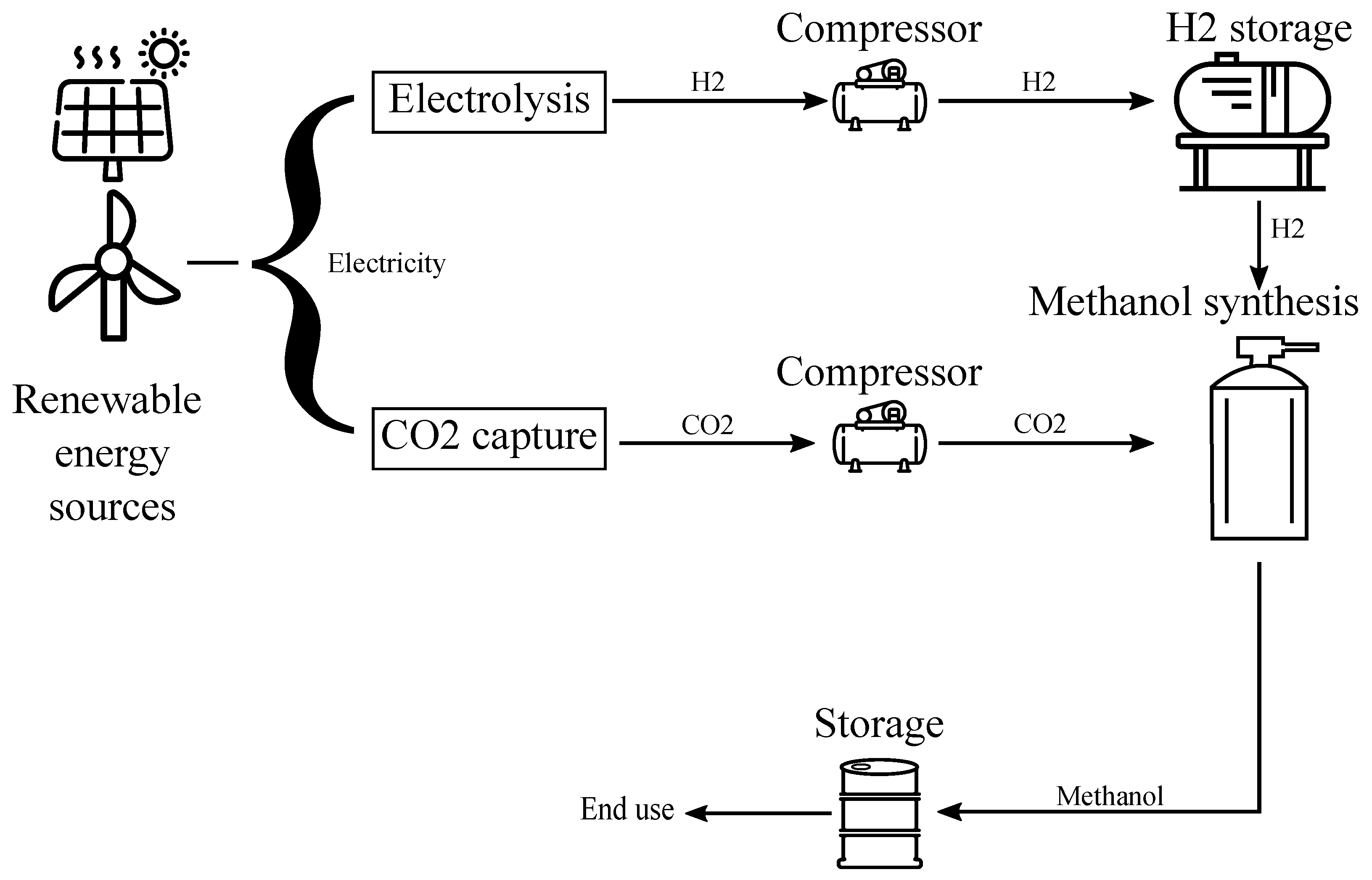
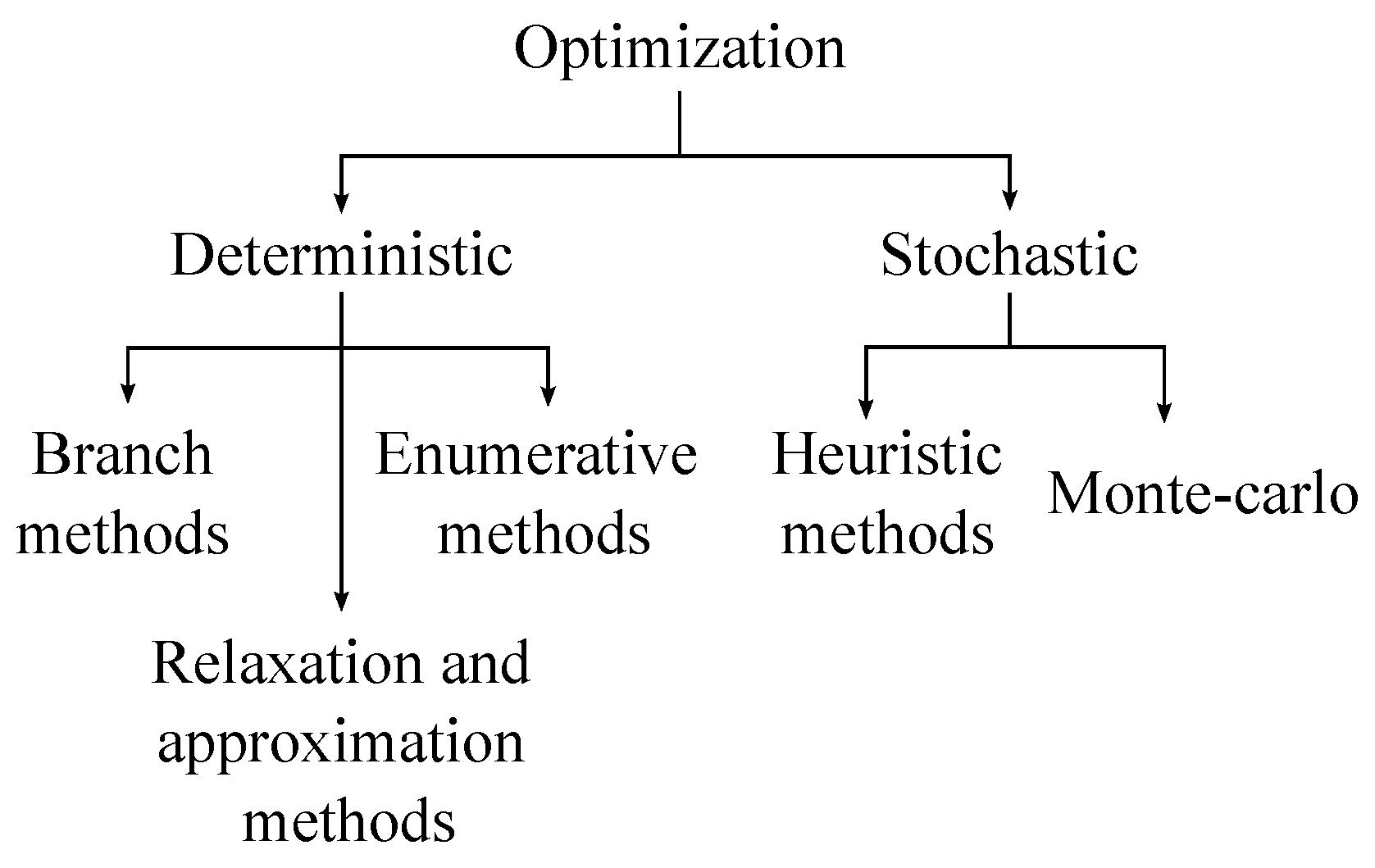


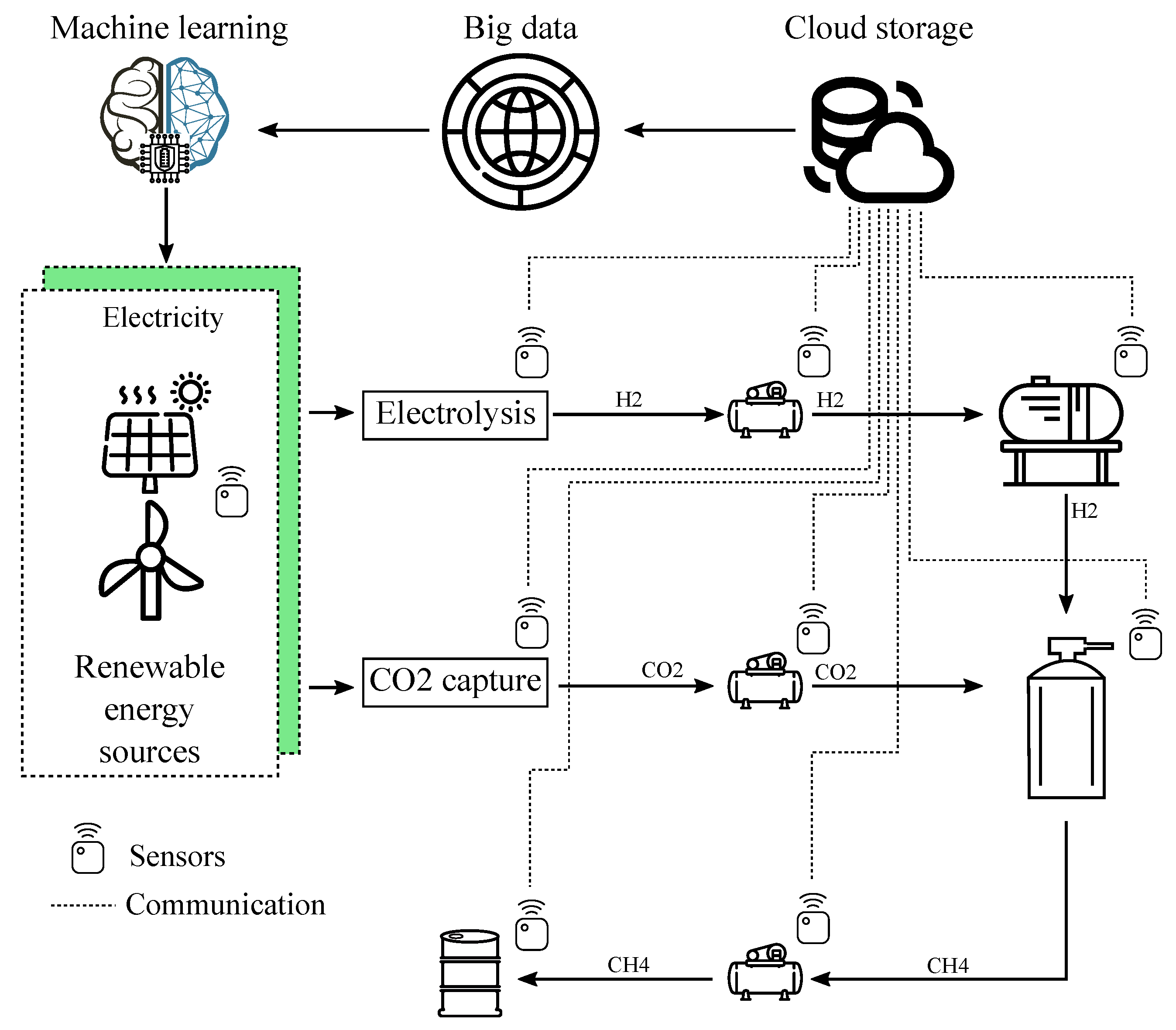
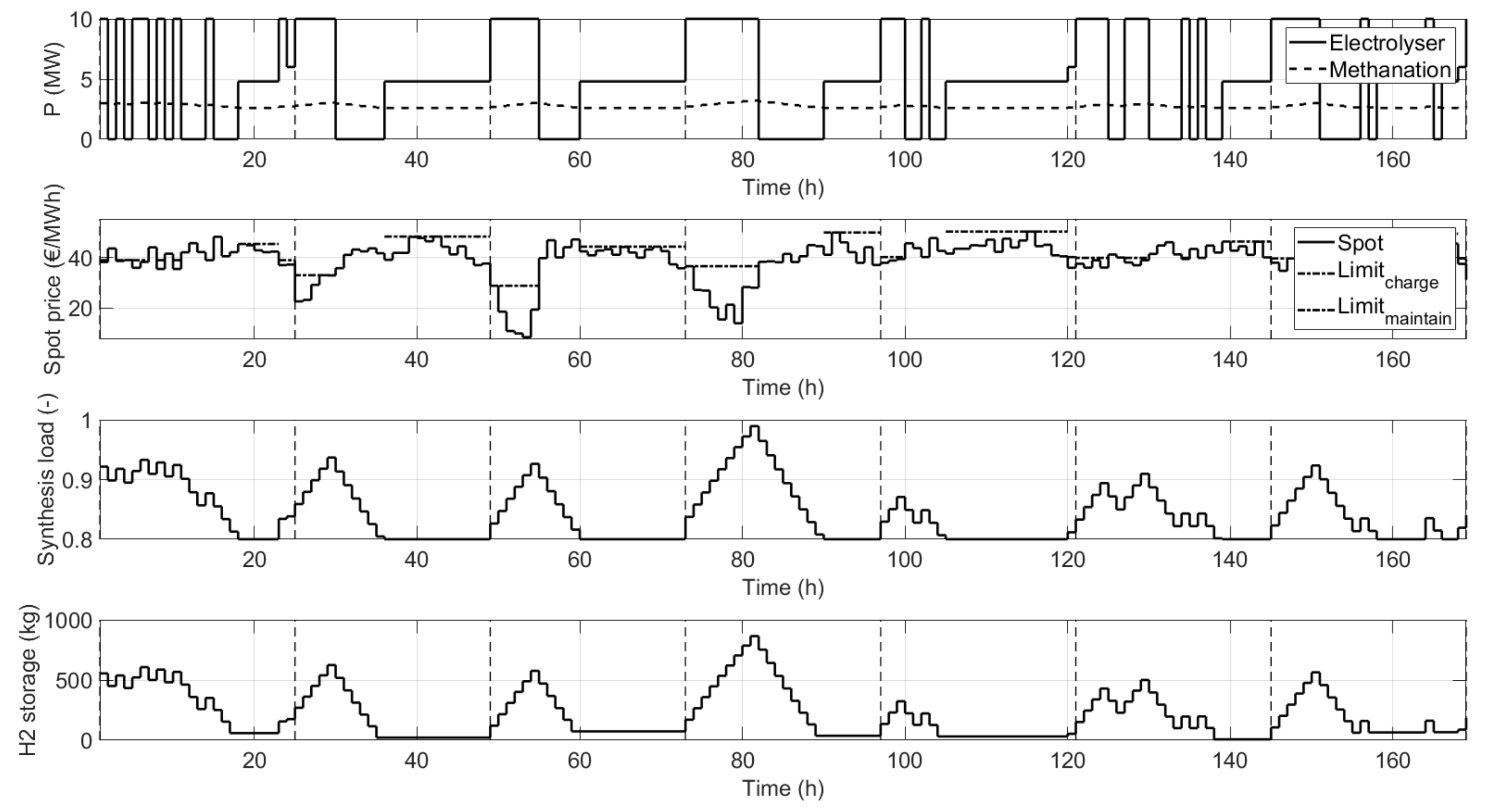

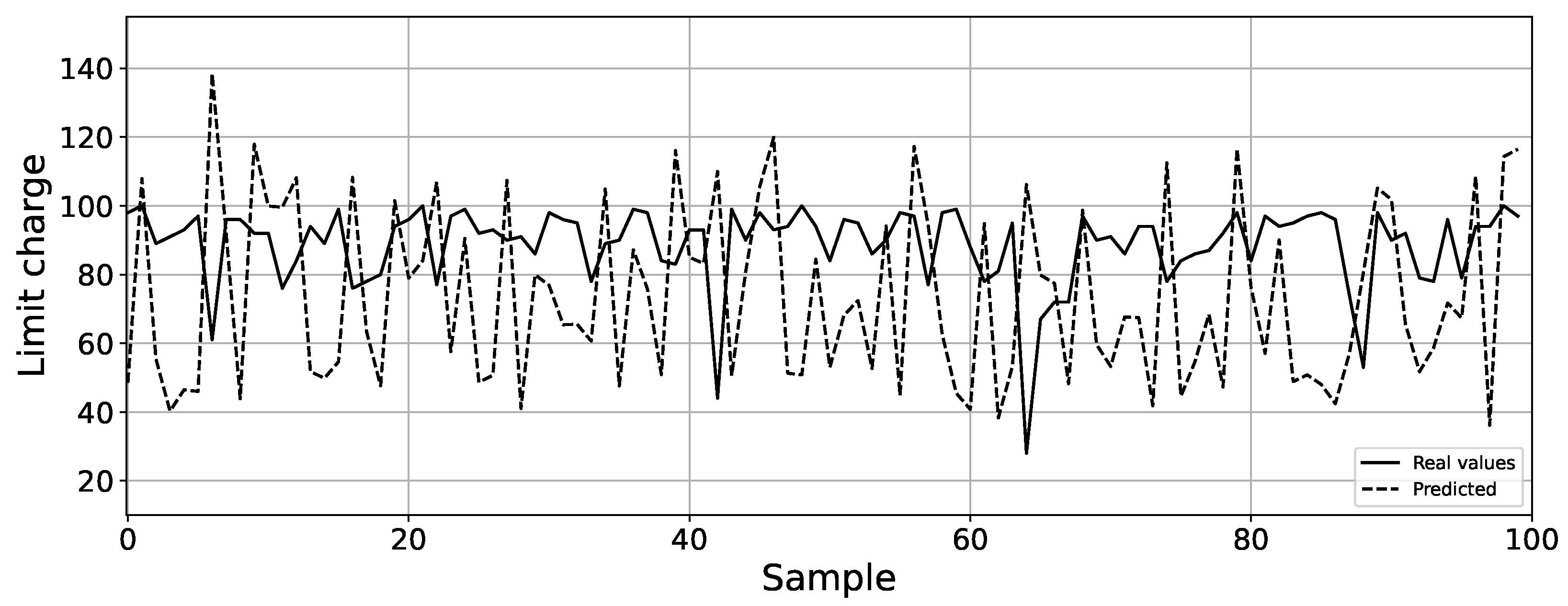
Publisher’s Note: MDPI stays neutral with regard to jurisdictional claims in published maps and institutional affiliations. |
© 2022 by the authors. Licensee MDPI, Basel, Switzerland. This article is an open access article distributed under the terms and conditions of the Creative Commons Attribution (CC BY) license (https://creativecommons.org/licenses/by/4.0/).
Share and Cite
Ullah, M.; Gutierrez-Rojas, D.; Inkeri, E.; Tynjälä, T.; Nardelli, P.H.J. Operation of Power-to-X-Related Processes Based on Advanced Data-Driven Methods: A Comprehensive Review. Energies 2022, 15, 8118. https://doi.org/10.3390/en15218118
Ullah M, Gutierrez-Rojas D, Inkeri E, Tynjälä T, Nardelli PHJ. Operation of Power-to-X-Related Processes Based on Advanced Data-Driven Methods: A Comprehensive Review. Energies. 2022; 15(21):8118. https://doi.org/10.3390/en15218118
Chicago/Turabian StyleUllah, Mehar, Daniel Gutierrez-Rojas, Eero Inkeri, Tero Tynjälä, and Pedro H. J. Nardelli. 2022. "Operation of Power-to-X-Related Processes Based on Advanced Data-Driven Methods: A Comprehensive Review" Energies 15, no. 21: 8118. https://doi.org/10.3390/en15218118
APA StyleUllah, M., Gutierrez-Rojas, D., Inkeri, E., Tynjälä, T., & Nardelli, P. H. J. (2022). Operation of Power-to-X-Related Processes Based on Advanced Data-Driven Methods: A Comprehensive Review. Energies, 15(21), 8118. https://doi.org/10.3390/en15218118









